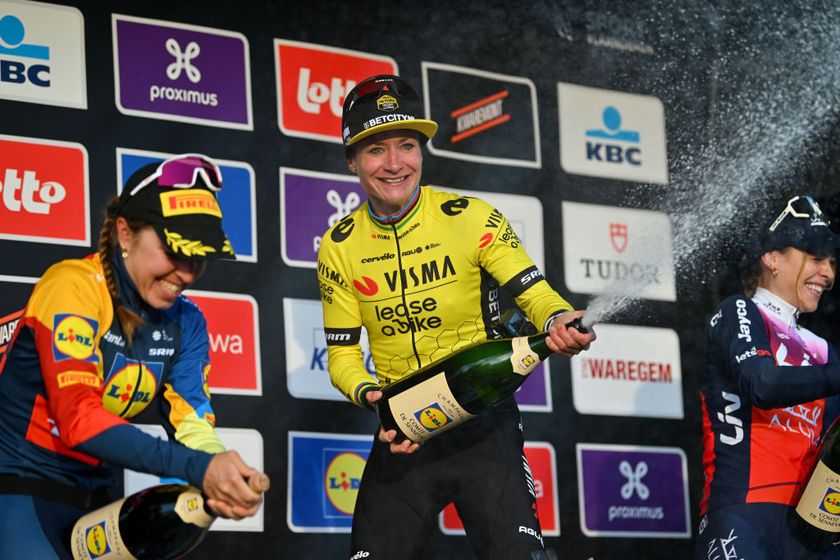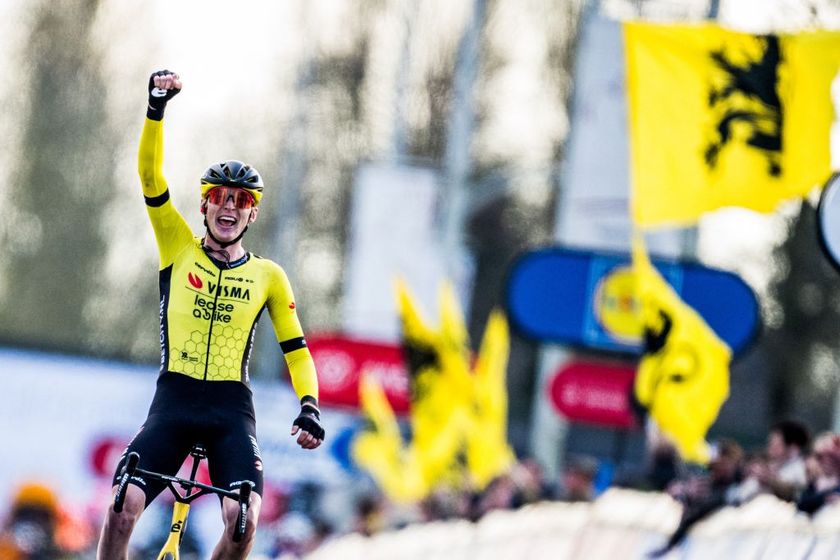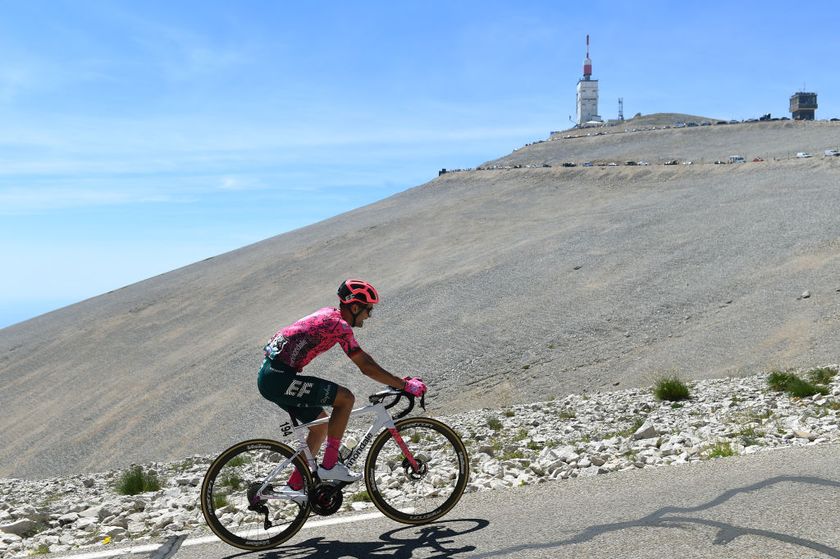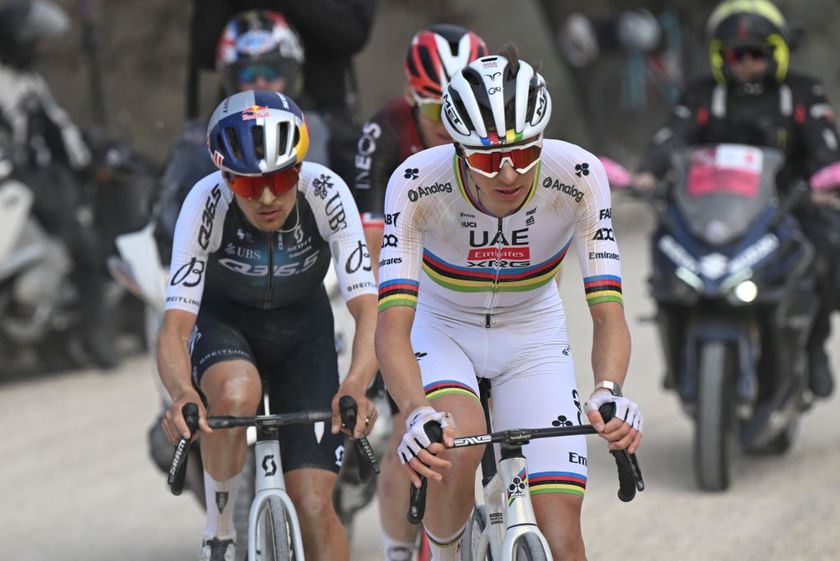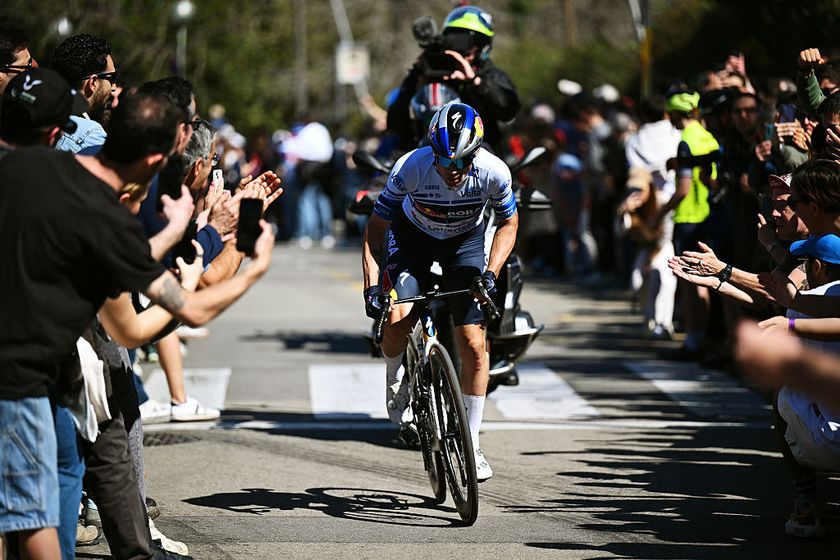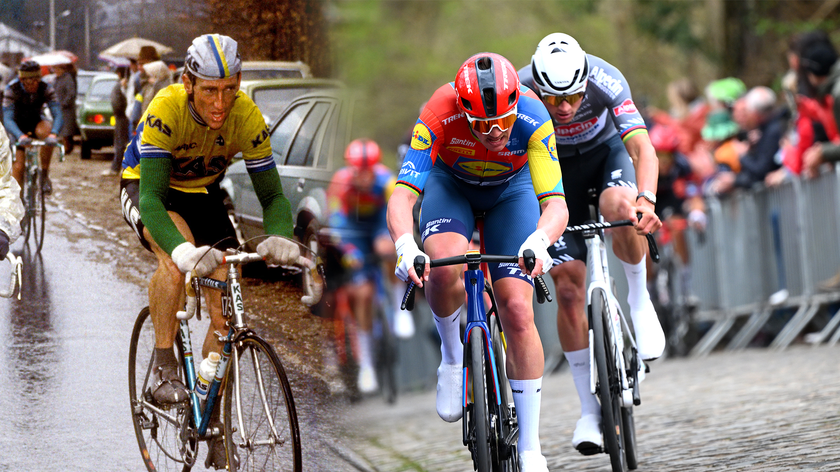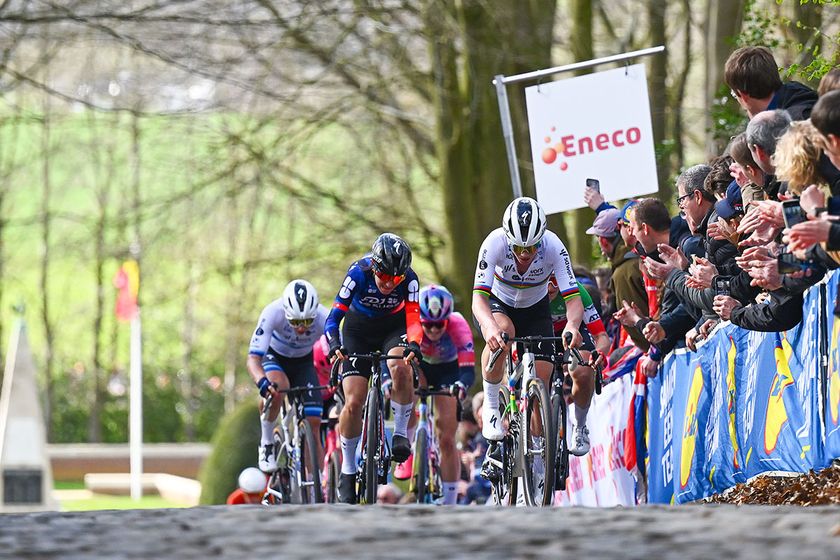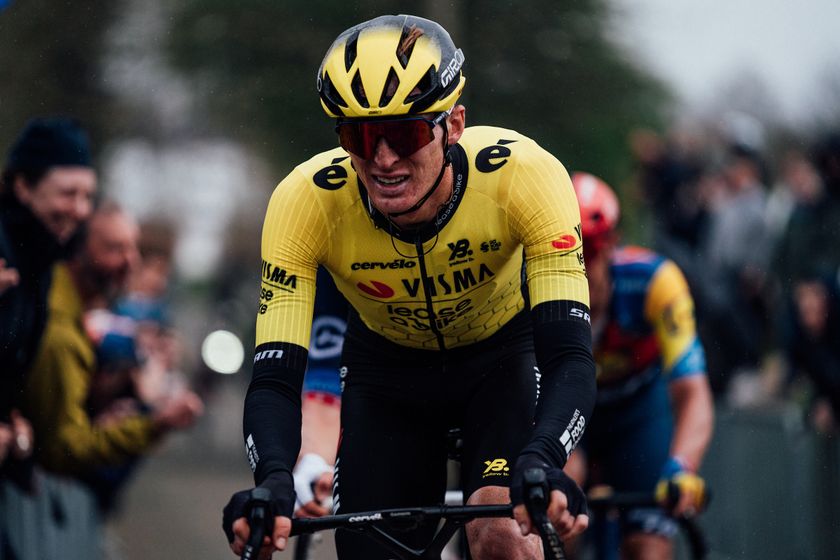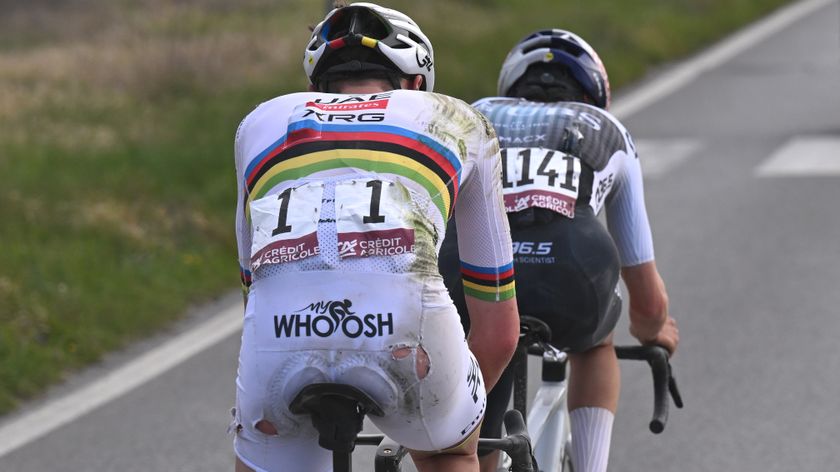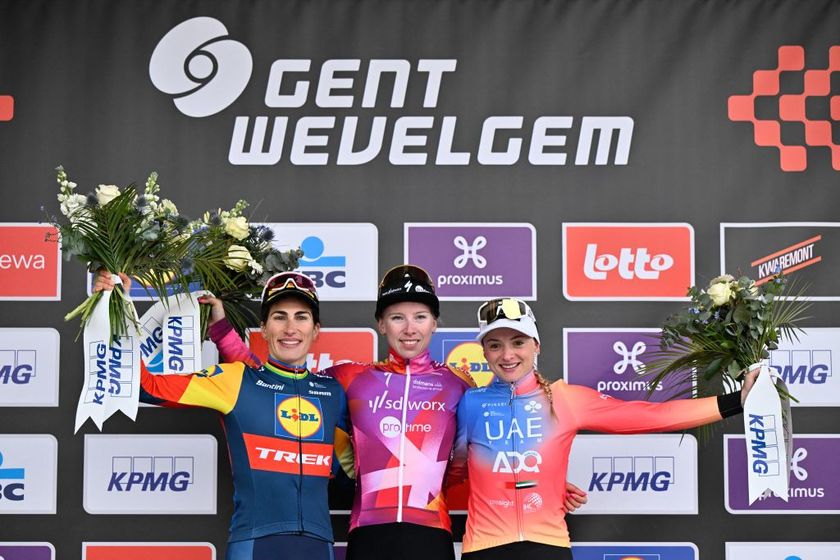Fitness questions and answers for November 14, 2006
Got a question about fitness, training, recovery from injury or a related subject? Drop us a line at...
Form & Fitness Q & A
Got a question about fitness, training, recovery from injury or a related subject? Drop us a line at fitness@cyclingnews.com. Please include as much information about yourself as possible, including your age, sex, and type of racing or riding. Due to the volume of questions we receive, we regret that we are unable to answer them all.
Carrie Cheadle, MA (www.carriecheadle.com) is a Sports Psychology consultant who has dedicated her career to helping athletes of all ages and abilities perform to their potential. Carrie specialises in working with cyclists, in disciplines ranging from track racing to mountain biking. She holds a bachelors degree in Psychology from Sonoma State University as well as a masters degree in Sport Psychology from John F. Kennedy University.
Dave Palese (www.davepalese.com) is a USA Cycling licensed coach and masters' class road racer with 16 years' race experience. He coaches racers and riders of all abilities from his home in southern Maine, USA, where he lives with his wife Sheryl, daughter Molly, and two cats, Miranda and Mu-Mu.
Kelby Bethards, MD received a Bachelor of Science in Electrical Engineering from Iowa State University (1994) before obtaining an M.D. from the University of Iowa College of Medicine in 2000. Has been a racing cyclist 'on and off' for 20 years, and when time allows, he races Cat 3 and 35+. He is a team physician for two local Ft Collins, CO, teams, and currently works Family Practice in multiple settings: rural, urgent care, inpatient and the like.
Fiona Lockhart (www.trainright.com) is a USA Cycling Expert Coach, and holds certifications from USA Weightlifting (Sports Performance Coach), the National Strength and Conditioning Association (Certified Strength and Conditioning Coach), and the National Academy for Sports Nutrition (Primary Sports Nutritionist). She is the Sports Science Editor for Carmichael Training Systems, and has been working in the strength and conditioning and endurance sports fields for over 10 years; she's also a competitive mountain biker.
Eddie Monnier (www.velo-fit.com) is a USA Cycling certified Elite Coach and a Category II racer. He holds undergraduate degrees in anthropology (with departmental honors) and philosophy from Emory University and an MBA from The Wharton School of Business.
Eddie is a proponent of training with power. He coaches cyclists (track, road and mountain bike) of all abilities and with wide ranging goals (with and without power meters). He uses internet tools to coach riders from any geography.
Get The Leadout Newsletter
The latest race content, interviews, features, reviews and expert buying guides, direct to your inbox!
David Fleckenstein, MPT (www.physiopt.com) is a physical therapist practicing in Boise, ID. His clients have included World and U.S. champions, Olympic athletes and numerous professional athletes. He received his B.S. in Biology/Genetics from Penn State and his Master's degree in Physical Therapy from Emory University. He specializes in manual medicine treatment and specific retraining of spine and joint stabilization musculature. He is a former Cat I road racer and Expert mountain biker.
Since 1986 Steve Hogg (www.cyclefitcentre.com) has owned and operated Pedal Pushers, a cycle shop specialising in rider positioning and custom bicycles. In that time he has positioned riders from all cycling disciplines and of all levels of ability with every concievable cycling problem.They include World and National champions at one end of the performance spectrum to amputees and people with disabilities at the other end.
Current riders that Steve has positioned include Davitamon-Lotto's Nick Gates, Discovery's Hayden Roulston, National Road Series champion, Jessica Ridder and National and State Time Trial champion, Peter Milostic.
Pamela Hinton has a bachelor's degree in Molecular Biology and a doctoral degree in Nutritional Sciences, both from the University of Wisconsin-Madison. She did postdoctoral training at Cornell University and is now an assistant professor of Nutritional Sciences at the University of Missouri-Columbia where she studies the effects of iron deficiency on adaptations to endurance training and the consequences of exercise-associated changes in menstrual function on bone health.
Pam was an All-American in track while at the UW. She started cycling competitively in 2003 and is the defending Missouri State Road Champion. Pam writes a nutrition column for Giana Roberge's Team Speed Queen Newsletter.
Dario Fredrick (www.wholeathlete.com) is an exercise physiologist and head coach for Whole Athlete™. He is a former category 1 & semi-pro MTB racer. Dario holds a masters degree in exercise science and a bachelors in sport psychology.
Scott Saifer (www.wenzelcoaching.com) has a Masters Degree in exercise physiology and sports psychology and has personally coached over 300 athletes of all levels in his 10 years of coaching with Wenzel Coaching.
Kendra Wenzel (www.wenzelcoaching.com) is a head coach with Wenzel Coaching with 17 years of racing and coaching experience and is coauthor of the book Bike Racing 101.
Steve Owens (www.coloradopremiertraining.com) is a USA Cycling certified coach, exercise physiologist and owner of Colorado Premier Training. Steve has worked with both the United States Olympic Committee and Guatemalan Olympic Committee as an Exercise Physiologist. He holds a B.S. in Exercise & Sports Science and currently works with multiple national champions, professionals and World Cup level cyclists.
Through his highly customized online training format, Steve and his handpicked team of coaches at Colorado Premier Training work with cyclists and multisport athletes around the world.
Brett Aitken (www.cycle2max.com) is a Sydney Olympic gold medalist. Born in Adelaide, Australia in 1971, Brett got into cycling through the cult sport of cycle speedway before crossing over into road and track racing. Since winning Olympic gold in the Madison with Scott McGrory, Brett has been working on his coaching business and his www.cycle2max.com website.
Richard Stern (www.cyclecoach.com) is Head Coach of Richard Stern Training, a Level 3 Coach with the Association of British Cycling Coaches, a Sports Scientist, and a writer. He has been professionally coaching cyclists and triathletes since 1998 at all levels from professional to recreational. He is a leading expert in coaching with power output and all power meters. Richard has been a competitive cyclist for 20 years
Andy Bloomer (www.cyclecoach.com) is an Associate Coach and sport scientist with Richard Stern Training. He is a member of the Association of British Cycling Coaches (ABCC) and a member of the British Association of Sport and Exercise Sciences (BASES). In his role as Exercise Physiologist at Staffordshire University Sports Performance Centre, he has conducted physiological testing and offered training and coaching advice to athletes from all sports for the past 4 years. Andy has been a competitive cyclist for many years.
Michael Smartt (www.cyclecoach.com) is an Associate Coach with Richard Stern Training. He holds a Masters degree in exercise physiology and is USA Cycling Expert Coach. Michael has been a competitive cyclist for over 10 years and has experience coaching road and off-road cyclists, triathletes and Paralympians.
Kim Morrow (www.elitefitcoach.com) has competed as a Professional Cyclist and Triathlete, is a certified USA Cycling Elite Coach, a 4-time U.S. Masters National Road Race Champion, and a Fitness Professional.
Her coaching group, eliteFITcoach, is based out of the Southeastern United States, although they coach athletes across North America. Kim also owns MyEnduranceCoach.com, a resource for cyclists, multisport athletes & endurance coaches around the globe, specializing in helping cycling and multisport athletes find a coach.
Speedplay cleat positioning
Cramps after time off
Teaching and training
Cleat position and seat height
The balance test
Positioning for mountain biking
Winter training
Training after injury
Crank length
Speedplay cleat positioning
I want to make you guys aware of a product that Speedplay offers that will address the problem in last week's posting. We offer a part called the Aluminum Extender Plate, part #13330. The Aluminum Extender Plate replaces our standard base plate. This increases the limit of rearward placement by 14mm. The Aluminum Extender Plate retails for $25.
Andy Jasper
Speedplay, Inc.
Cramps after time off
I have been racing for thirty five years. In my early years I won nation and oceanic titles, but now as a 49 year old master I still don't know what is really happening to my legs. At 49 years old I weigh 68kgs and am 170cm tall - I ride 172.5mm crank length on the road, and on the track 165's. As a 19 year old I used 170mm for the road and 165mm on the track, and I weighed 67kgs. I always have a high cadence usually one cog less than every one in the bunch. I set every new bike up from scratch so I don't transfer over the old bad habits.
Muscle myopathy does not seem to be the issue in my case. However if what we are talking about is that 'crampy' feeling after a hard ride or race, the feeling when you can't walk down steps which can be debilitating, then I was told this was lactic build up or over-training. It got to a point where I could only do a training ride or race twice a week.
For me this still occurs so is it genetic or a chemical imbalance? Nowadays when I have a few days off the bike I make the first one a slow to medium ride - that's off the big ring. I average about 30 km/h for about 3.5 hours (100kms) at varying heart rates - isn't this how we should train!? But what is going on in our bodies - muscles tearing apart? Lactic buildup? Genetics? Chemical imbalance? Incorrect set up with bike position?
In recent years I have been diagnosed with a depressive disorder and as a result I take SSRI's [Selective Serotonin Re-uptake Inhibitors]. These are not the best as they slow down my reaction times which in turn slows me down, making it harder to race. I have noticed that the SSRI's appear to eliminate a large amount of the muscle crampy soreness. I continue to up the ante and race hard - I still race elite races at an Australian national level, B/C grade. Over the years bikes and positions have changed, as have shoes, pedals and seats - I can eliminate these as a problem. Training methods have changed - big gears, little gears, recommended time on the bike, recovery times and so on. Can anyone explain what is happening to us once we eliminate these variants?
Pete
Australia
Scott Saifer replies:
The soreness you are describing is almost certainly not an experience of lactate or lactic acid itself. Measurements of muscle and blood lactate concentrations after exercise show that they return to normal levels well before the time that post-exercise soreness shows up. Besides this, lactate does not make muscles sore.
Teaching and training
I am a masters road racer in the northeast of the US. To support my needed training time on the bike, I often teach a spin class. While I have been fortunate enough to sell my classes on periodization (thus having to do what I do come November-April), I often find my heart rate jumping higher and getting out of breath while having to talk while under effort. After a few words, what was once a zone 2 turns to 3 or 4.
1. Any tricks of the trade I should work on to keep my breathing under control considering I will then need to instruct/talk?
2. Does barking orders and jumping zones have a positive, or potentially negative, effect on my training and proper breathing?
Breathless,
John Mattio
Scott Saifer replies:
Thanks for this awesome question. I have several clients who teach spin classes and have still been improving their racing over the past few years. Obviously having to do a hard session on a particular day at a particular time could be disastrous for racing performance, if the relative timing of the class and race are wrong. Now to your questions, and then I have a radical suggestion for you.
Cleat position and seat height
Thank you for all the great advice you provide about cleat position and cyclist posture/biomechanics. I have a question, one that a few others in our Belgium bike club have also wondered about.
I have been riding 15 years, have been told my flexibility is way above average, have never really had on-the-bike problems and thus I have suffered little biomechanical problems on the bike save for shimming my left cleat due to a 6mm left leg being shorter than the right. I ride Sidi shoes (I have narrow feet, size 45) and Look (red cleat) pedals. The ball joint on both shoes/cleats has been about 5mm forward of the axle crank center.
After years of wondering, I recently decided (trying to get to your 10mm suggestion) to just shove the red cleats back as far as they could go on the Sidi shoes, to test your theories. On the first and ensuing ride after doing this, I was in heaven, feeling a more powerful plant on the pedals, feeling even more better in posture (something I couldn't believe), and not noticing any toe pointing in and/or out.
My question is this: when a person begins moving the cleats of any shoe back to lengths you suggest in your articles, what should we be doing with the seat height and seat front/back position? For example, I changed nothing else on the bike when I slid the red cleats all the way back (keeping their same position for everything else). I have noticed over the weeks some soreness in my right (longer leg) frontal knee area (almost like a meniscus soreness), but nothing that my flexibility and comfort while on the bike can't overcome and/or just ignore.
In general, should there be some seat height and/or front-back adjustment when moving cleats to your suggested lengths?
David Whetzel
Mons, Belgium
Steve Hogg replies:
I am assuming from what you have implied that you moved the cleats back 5mm or so further on your shoes. Assuming this is the case, then it is probably likely that you need to drop the seat a couple of mm. I say 'likely' because sometimes a rearward change in cleat position can cause a rider to alter their pedaling technique. This can sometimes mean that seat height may even need to rise.
The balance test
I was reading the fitness letters and reference to getting the saddle position setup dialled using the 'balance test'. Can you point me to an article that explains this test?
Rolf Rae-Hansen
Edinburgh
Steve Hogg replies:
We all want to have an effective position on a bike and there is a lot of often conflicting advice available regarding this. So let's start with basics and define a couple of terms. There are 2 basic philosophical approaches that can be taken to rider positioning; reductionist or holistic. A reductionist approach tends to focus on one aspect of the body. It might be a strict biomechanical approach based on statistical norms or it may be formula driven and based on mathematical formulae. Sometimes a mix of both is used.
Positioning for mountain biking
I was wondering if the recommendations for cleat positioning or saddle fore/aft position are any different for a mountain bike than a road bike Originally, when I got my mountain bike, the shop set me up with the saddle farther forward than I have on my road bike and told me that it should be different than a road bike. But I wasn't comfortable so I gradually changed my position back to what I had on my road bike and then everything felt fine. So, is there any reason that a mountain bike position should be different? Should I just get used to the position?
Dave Walker
Livermore, CA
Scott Saifer replies:
For maximal power and comfort on the flat, the mountain bike should be set up similarly to the road bike in terms of cleat position, saddle height and setback. If you are using your mountain bike for cross training for the road season, making the fits match is probably your best bet. The difference between the road and mountain bike is that on the mountain bike, bike handling can be as high a priority as power and comfort.
Winter training
I wouldn't pretend to be an expert on winter training methods, but I find validity of both arguments in doing long winter rides and short 20 minute power intervals. I've been riding/training racing for the past 20 years.
I also understand a little about athletic training/physiology/kinesiology as a physical rehab therapist. I've found in the past when I have done mostly the long winter base mile training, I came into the season unable to sustain high energy intervals and my sprinting ability was terrible. It makes sense to perform shorter high power workouts. After all, muscles are keenly activity specific.
When I've gone the other way and engaged in mostly shorter high intensity workouts, I've come into the season fairly competitive, but lacked the endurance to perform high intensity efforts over time. I think the old maxim "Ride your bike" has always been the most obvious and wisest method.
When one looks at resistive weight training to build muscle mass and strength, one can see how repetitive training with a specific muscular activity improves that muscles ability to perform that particular task. I'm certain it's the same for high effort intervals, sprinting and climbing.
Whatever you're looking to improve, constant repetition with an eye to push the envelop is the key. Coaching or experience is important to know how much and how hard and how often and how and when to rest. I find the longer winter ride is also a great time to work on pedal speed and stroke efficiency.
Dan Mitchell
Scott Saifer replies:
You are 100% right that a winter of all base will bring you to the season unprepared for hard effort, and a winter of all harder effort, or of training with hard effort being a large percentage of training time, will bring you to the season without the endurance to survive the races strong enough to take advantage of your ability to make a hard effort.
Training after injury
I'm a 32 year old male cyclist. 11 weeks ago I was injured in a collision with a car. My doctors have advised that I can start riding again in a week's time, but eager to get back out on the road, I did a 20km criterium today. First time on the bike and first race of the season in one go. While happy that I was able to finish without too much discomfort, I think that I have lost a lot of muscle/ strength in my legs and nearly all of my fitness. My weight has dropped around 2kg in this time. I finished last and rode at an average speed 5km/h slower than previous times and with my heart rate close to max the whole time.
Prior to the accident on weekdays I was doing 1hour in the mornings and 1hour at night on the indoor trainer and sometimes 1hour 45minutes at night to catch up on missed sessions, combined with a 3 hour ride on a Saturday, with no hills and the same with hills on a Sunday. I did this for 6 months over winter. Also with some swimming at lunch time and running in the mornings when away on business trips and holidays (1hr run). So min of 16hrs a week cycling.
All of the work on the trainer and running was base building with no anaerobic work. The plan was to cut down the base training and start interval/AT work at the beginning of the season, cutting back the hours but increasing the intensity.
Now I'm at the point where I'm not really sure where I should restart my training. Should I start with intervals/AT to build back the muscle. Or do I start over again on the base work. Will my fitness and strength come back quickly or is going to be slow process. I had always subscribed to the theory that if you had a week off training it took 2 weeks to get the fitness back. If this is true will it take me 22 weeks (6 months) to get the fitness back?
Michael Glennon
Scott Saifer replies:
As you read this, try to be glad that you survived the collision and are able to ride again. Unless you've been doing some aerobic work while off the bike, you are back to square-one on training and fitness. Your ratio of two weeks training for each week off is about right, but fortunately it only applies to shorter times off, up to a few weeks, otherwise guys who start to train in the 40s could never get fit.
Crank length
Is there any truth in the following formula? Recommended crank length in millimeters = (1.25 * inside leg in cm ) + 65
Until recently I had been using a 170mm crank length, then I purchased my new bike which has 172.5mm. Apart from the obvious changes in geometry going from one manufacture to another, I noticed that the longer crank felt very strange and reduced my explosive power. But this was offset by the fact that I moved to a stiffer frame. So in summary, I actually have not lost nor gained from buying a new bike, just feel a little strange. Wanting to know more about crank length, I stumbled across this formula. My inside leg is 80cm and my height is 178cm, if you crunch those numbers the answer comes out as 165mm crank length. This might be for a track crank I am not sure.
Daniel
Australia
Scott Saifer replies:
The ideal crank length depends on the intended use and the individual rider. This formula is not accompanied by an intended use, ergo is not valid. Now, even assuming it was accompanied by an intended use, a formula that takes into account only inside leg length is probably not going to be valid for all riders.
